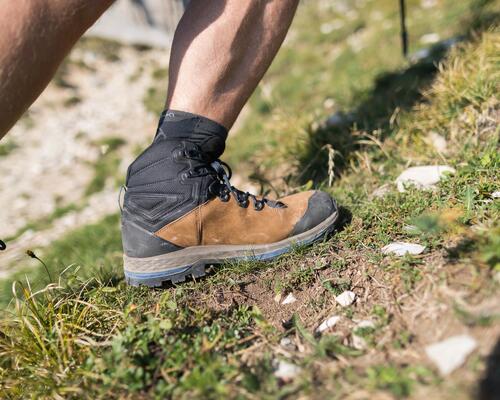SnowContact: soles that offer grip and traction
Thanks to SnowContact technology, Quechua designed a new kind of sole to ensure maximum traction during your hikes on snowy terrain. By consulting with snowshoe enthusiasts, Quechua teams identified the need for a special type of sole that could provide traction even on snow.
Made for winter hiking with or without snowshoes, shoes that come with SnowContact soles are designed to provide impeccable performance on any surface, even the most slippery, such as snow or ice.










